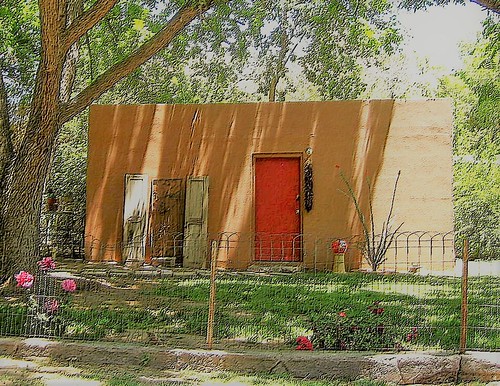 |
| Acequia in Tularosa, New Mexico |
I've talked before about the Tularosa acequias and the battles between the Spanish-speaking Tularosa settlers and the Mescalero Apache.
Marc Simmons, a New Mexico historian tells the story of the Tularosa Ditch Wars, which were waged between the same settlers and English-speaking later-comers, who stole their water upstream.
Here's Mr. Simmons' story, printed in the Santa Fe New Mexican. An excerpt:
... in the early 1860s, a new band of Hispanic pioneers arrived. They were from the Mesilla Valley and El Paso, where a Rio Grande flood had washed away their homes and fields. Wanting a new start and willing to work for it, they founded the community of Tularosa. Other settlers from Socorro soon established the neighboring village of La Luz.
The people built adobe homes, dug irrigation ditches to tap the river and organized a municipal government with an alcalde, or mayor. They also had occasional run-ins with the Mescaleros.
But life was generally serene, and the desert blossomed with orchards and a huge vineyard. Travelers considered Tularosa an oasis.
Trouble loomed on the horizon, however. .....
Water still gets stolen in New Mexico, I hear, and not too far from Alamogordo, either. Could just be rumor, though.















